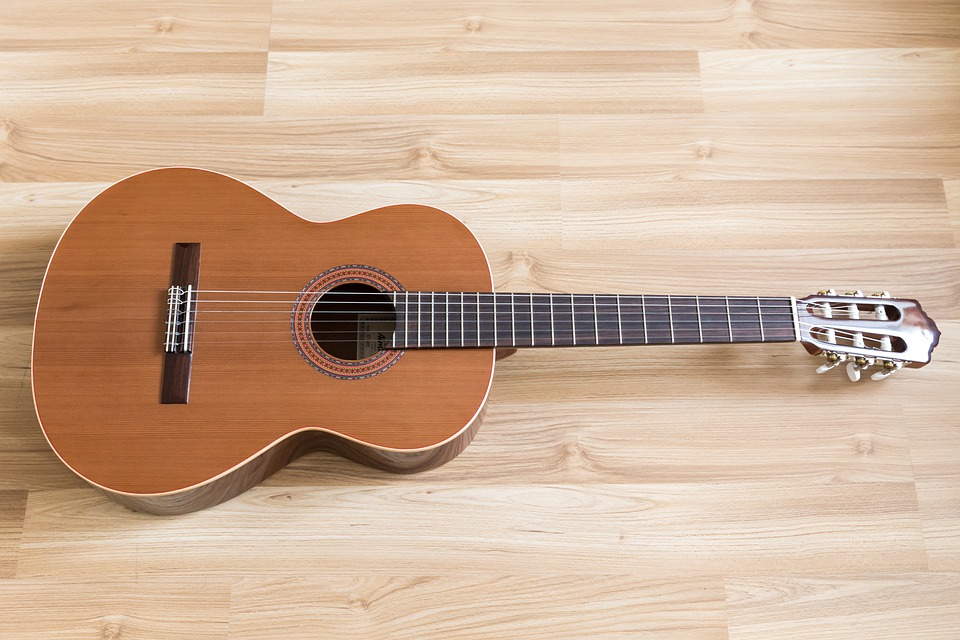Ever wanted to know why the frets are spaced the way they are on the neck of your guitar? This is what we will try to explain in this article, in a very basic way that is brief but largely sufficient if we do not intend to build a guitar.
Pythagoras’ observations
Pythagoras thinks that music, like everything, can be explained by mathematics. No wonder, that he discovered a relationship between the length of a stretched string and the pitch of the sound it makes when vibrated. According to him, the shorter the string is, the higher the pitch.
Vibrate a stretched string of length L: it gives a sound whose height we are going to consider as a reference. For example, suppose it produces the note Do.
Now take a rope of length L / 2 and exert the exact same tension on it.
Results? When you vibrate it, it will produce a higher pitched sound, which the ear will perceive as being the same sound (the note C in our example).
We speak of a “note at the octave”.
For the Pythagoreans, the ratio 1/2 or 2 is considered harmonious but “fruitless” since it always reproduces the same note at different octaves.
On the other hand, a string of length L / 3 gives a different sound but in harmony with the first: for the Pythagoreans, the ratio 1/3 is considered as “fruitful”.
Pythagoras, from these observations, developed his scale, which would later be called the “Pythagorean scale”. He reduced the length of the vibrating string according to simple ratios obtained from 1, 2, 3 and 4 (but also 3 x 3, 4 x 4, 2 x 2 x 2, 3 x 3 x 3, etc.), the sounds produced can then only be harmonious.
On the guitar
The tuning fork of the guitar It is the length of the vibrating string played empty, measured on the high E string, between the head nut and the bridge saddle.
On an acoustic guitar, the pitch varies between 61 and 66 cm. The shorter the pitch, the lower the string tension: less force is needed in the fingers on guitars with a short pitch.
Pythagorean reports on the neck of the guitar
The simplest of these ratios can easily be measured on a fretboard. If for example the open string (the tuning fork) is 66 cm long, you can easily spot the divisions located at 33 cm (1/2), 44 cm (2/3) and 49.5 cm (3 / 4):
As you can see, it is the twelfth fret that divides the string into two equal parts and therefore corresponds to an interval of one octave from the string played empty.
For the other frets, it is the same principle but the calculation formula is less obvious. Do you want to know her? This is the L / 17.817 ratio (L being the length of the tuning fork).
Calculate the width of the boxes
For box 1 (i.e. the distance between the nut and the first fret), we divide the length of the pitch by 17.817.
For box 2, take the length of the tuning fork minus the length of box 1 and divide again by 17.817.
And so on for the other boxes.
But this calculation is rarely correct since we have to round to the decimal place. Suddenly, other means of finding one’s way are also used, such as for example the fact that the fret 12 is located exactly in the middle of the tuning fork.
Bridge saddle error compensation
When you press a string against a fret, you not only shorten it (for a higher note) but you also increase its tension slightly. If this happens, the score is no longer comes quite right. And this falsity increases as we get closer to the last fret.
To compensate for this, luthiers tilt the saddle of the bridge to increase the pitch of the bass strings.
This is not an absolute value: the compensation angle of the bridge saddle varies between manufacturers and the action of the guitar (i.e. the height of the strings in relation to the fingerboard of the neck).
For example, for folk guitars, the gap between the low E string and the high E string varies from 4.8 to 6.4 mm.
Why is the lower string the most compensated?
Because the higher the draw (diameter of the string, expressed in inches) of the string, the more wrong the note is in the highs without the tuning fork compensation. However, the low E has a higher draw than the A, the A than the D, and so on …
This is also why the tuning fork is measured at the level of the high E string, where the falsehood is weakest.
